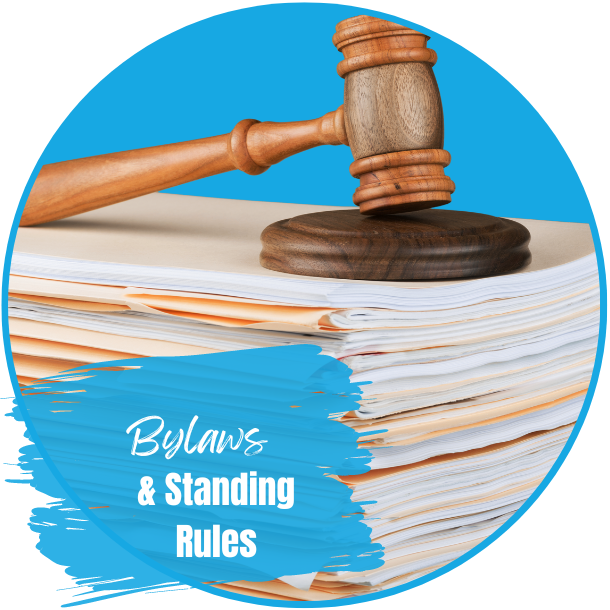Bylaws vs Standing Rules
Standing rules outline the procedures of the organization that are not included in the bylaws and must not conflict with the bylaws or the California State PTA Toolkit. They may be changed or amended without notice with a two-thirds (2/3rd) majority vote of the association, or a majority vote with thirty (30) days’ notice.
Some of the differences between standing rules and bylaws are:
- Bylaws state when the meetings of the association are held.
- Standing rules tell where and what time association meetings are held, and when executive board meetings are held.
- Bylaws give the primary responsibilities of officers and chairmen.
- Standing rules give the specifics.
If the bylaws state that the first vice president is responsible for programs, the standing rules would list the various special committee chairmen who work under that vice president, such as Founders Day, Honorary Service Awards, etc. The bylaws describe the authority of committees. Standing rules indicate which committees are standing committees whose chairmen are voting members of the executive board and which committees are special committees, whose chairmen do not have executive board voting privileges and to which executive board member they report.
If the organization has supplies or equipment, the standing rules would state who is responsible for them and where they would be kept. They might also list details of the installation of officers, and who has responsibility for securing the past president’s pin.
Did You Know?
- California State PTA does not provide bylaws to units, councils, districts electronically.
- Unit, council or district bylaws should NOT be scanned or posted on any publically-accessible website.
- Bylaws always include officer signatures, which must be protected from inappropriate use.
- Bylaws should be reviewed annually, and updated every three years by the bylaws committee of the association, chaired by the parliamentarian.
- See CAPTA.org for much more information on bylaws
How to Update Your Bylaws
For Schools/Units

